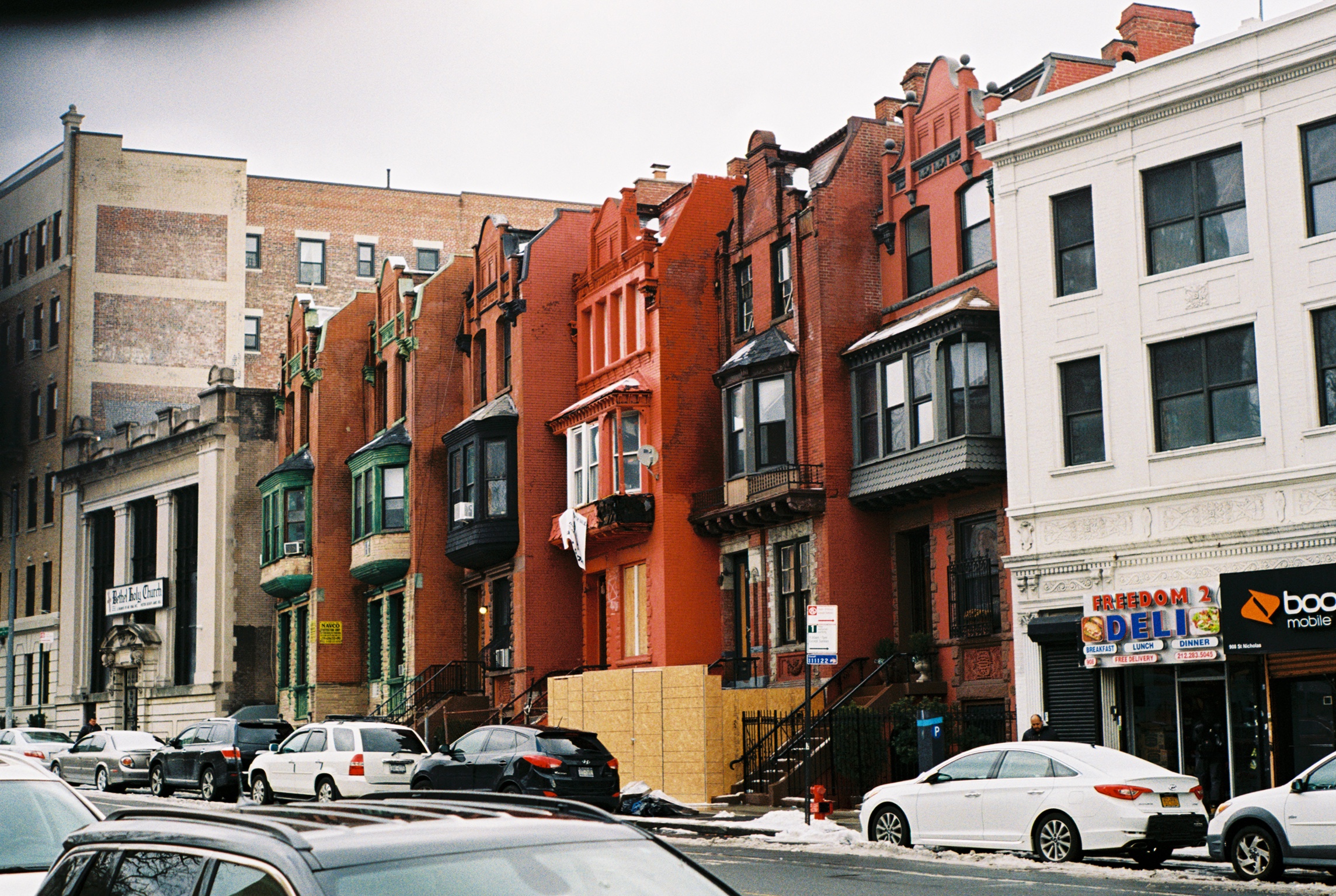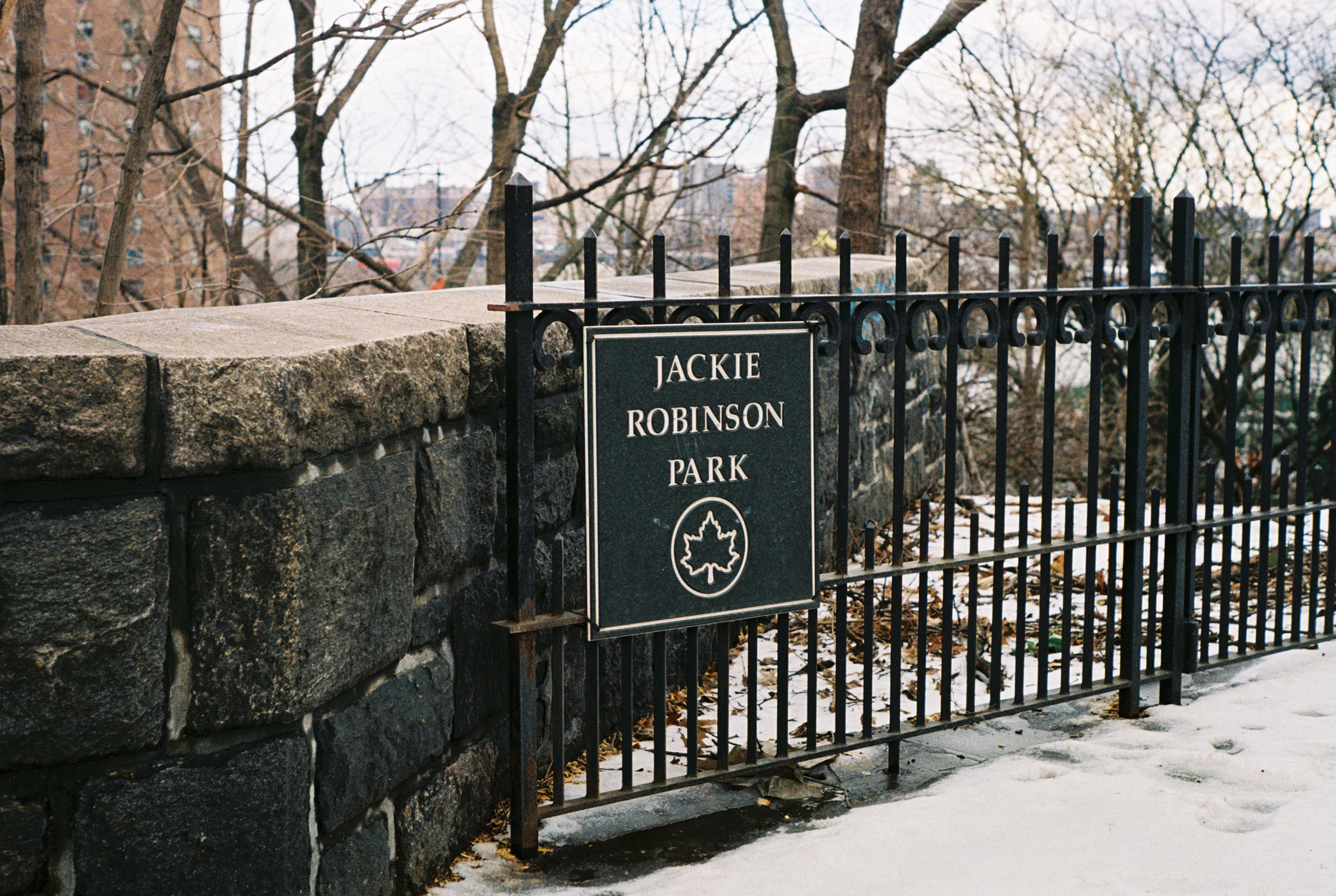SUGAR HILL

A mini-article for a mini-neighborhood.
Any reader of fletch.nyc will know that I’ve made it my life’s mission to take the subway as far as you can go (case in point, last week’s article). I live for destinations that seem a world away, to the fault of preferring exertion and arduousness over exploring what’s right before me. The result is often sweeping and prolific; truth be told I struggle to write less than five pages (not necessarily a good thing). I’ll often return home and scour the New York City Public Library for hours until I catch myself eons later pulling parcel data from hundred years prior. I lean into neighborhoods of vast scope and distance (Flushing, Pico-Robertson in LA, the mile long walk between Coney Island and Brighton Beach in the dead of winter...these are neighborhoods that rival the average American city in population, diversity, and, well, everything really). At the polite behest of one of my readers, who asked simply “what about Manhattan?”, I’m here to break the trend (if only for a week). New York would not be New York without it’s heart. From the caverns of Manhattan its blood pulses outward in the sinous arteries of the Metropolitan Transit Authority, with its returning veins dumping an oxygen-deprived populace of every color, country, and creed back into its center. The pulse continues and the circulatory system that is this great city flows again and again and with it the world bleeds….bleeds into the streets of the East Village, of Flatbush, of Foxhurst, of Jackson Heights, of the Rockaways, of St. George, of Bedford-Stuyvesant….all of New York City.
What must be stressed, what I myself have at times missed, is that there truly is a starting point, and that nexus is and always will be a 13 mile long island stuck between a formidable river and a tidal estuary that was famously purchased by a Dutchmen for 60 guilders...forever converted in oral tradition to $24 US dollars (which, for those still with me here, has been fact-checked by many a fellow nerd and is estimated, primarily through comparison to the price of silver and beer in that year to the present, to actually be worth approximately $1050 USD in 2006 figures ). This island, this chunk of Manhattan schist , is what brings life to every other place about which I write. It would take several lifetimes to explore this island, yet alone the rest of New York (I’ll go one further and posit that it’d take a lifetime just to eat everything in Chinatown but I’m losing focus here). Thus the thought came to me after receiving the message, “what about Manhattan” :
Can I not begin by letting a place of such legacy speak for itself? What would an article of under a page in length about Manhattan look like? Can pictures really speak a 1000 words? And if so, where on Earth can I share with readers in such brevity without missing its essence, its suchness? And is anyone still reading this thesis-less garage of an article by this line anyways? If even just one reader’s made it this far, and God help them, I’ll need to go somewhere small…somewhere reeking of New-York-ness, somewhere that says it all without words….
Sugar Hill!
So, without further ado, I will show, not tell, Sugar Hill, in my first measly attempt at terseness and very likely my last. All I ask of your remaining and extraordinarily valuable time is a quick paragraph of neighborhood background info here and that’s it, I promise.
Sugar Hill, Manhattan. Kodak Ultra Max 400. Pentax K1000. Fletcher Berryman 2019.
Sugar Hill, Manhattan. Kodak Ultra Max 400. Pentax K1000. Fletcher Berryman 2019.
Sugar Hill, Manhattan. Kodak Ultra Max 400. Pentax K1000. Fletcher Berryman 2019.
Sugar Hill, with The Bronx off in the distance. Kodak Ultra Max 400. Pentax K1000. Fletcher Berryman 2019.
Sugar Hill is a neighborhood within a neighborhood within a neighborhood, and the smallest with which I’m familiar in New York (some will say Tudor City, others might mention Little Italy to which I refuse to respond, or worse still, this heavy stretch of a claim by Curbed that a long gone hamlet called Ramblersville is still a true neighborhood in Queens ). It’s within the multiverse of Harlem, and in turn within Harlem’s sub-neighborhood of Hamilton Heights. Running “only” ten blocks (that’s tiny for New York standards) from 145th to 155th , it’s defined by its storied past as the home of African American elite: Duke Ellington (jazz genius), Thurgood Marshall (first African American Supreme Court Justice), W.E.B. Du Bois (founder of the National Association for the Advancement of Colored People [NAACP] and famed historian/sociologist/Pan-Africanist/civil rights activist), and many more. It’s a brownstone lover’s paradise, in my opinion more than capable of rivaling the West Village or Park Slope or Fort Greene for prettiest neighborhood any day of the year, and is designated a U.S. Historic District, and NYC Landmark, is on the U.S. National Register of Historic Places, and…best of all….
You’ve probably never, ever been there.
So here it is, a show-don’t-tell, a boatload of photos taken on a beautiful February day with fellow photographer and close friend Elezar and nothing more.
Welcome to tiny Sugar Hill,
between 155th and 145th,
and Amsterdam Ave and Edgecombe Ave,
in Hamilton Heights,
in Harlem,
in the Borough of Manhattan,
in the City of New York,
in New York State,
in the United States of America.
Enjoy,
Fletcher
Sugar Hill, Manhattan. Kodak Ultra Max 400. Pentax K1000. Fletcher Berryman 2019.
Sugar Hill, Manhattan. Kodak Ultra Max 400. Pentax K1000. Fletcher Berryman 2019.
Sugar Hill, Manhattan. Kodak Ultra Max 400. Pentax K1000. Fletcher Berryman 2019.
Sugar Hill, Manhattan. Kodak Ultra Max 400. Pentax K1000. Fletcher Berryman 2019.
Sugar Hill, Manhattan. Kodak Ultra Max 400. Pentax K1000. Fletcher Berryman 2019.
Sugar Hill, Manhattan. Kodak Ultra Max 400. Pentax K1000. Fletcher Berryman 2019.
Sugar Hill, Manhattan. Kodak Ultra Max 400. Pentax K1000. Fletcher Berryman 2019.
155th St Station. Sugar Hill, Manhattan. Kodak Ultra Max 400. Pentax K1000. Fletcher Berryman 2019.
Sugar Hill, Manhattan. Kodak Ultra Max 400. Pentax K1000. Fletcher Berryman 2019.
Sugar Hill, Manhattan. Kodak Ultra Max 400. Pentax K1000. Fletcher Berryman 2019.
The elusive “ghost train”…haters will say it’s not real. Sugar Hill, Manhattan. Kodak Ultra Max 400. Pentax K1000. Fletcher Berryman 2019.
Taking flight. Sugar Hill, Manhattan. Kodak Ultra Max 400. Pentax K1000. Fletcher Berryman 2019.
Finches perched on a fire escape, just hangin’. Sugar Hill, Manhattan. Kodak Ultra Max 400. Pentax K1000. Fletcher Berryman 2019.
Sugar Hill, Manhattan. Kodak Ultra Max 400. Pentax K1000. Fletcher Berryman 2019.
Sugar Hill, Manhattan. Kodak Ultra Max 400. Pentax K1000. Fletcher Berryman 2019.
A bird looks out over the rest of Harlem and The Bronx behind it. Sugar Hill, Manhattan. Kodak Ultra Max 400. Pentax K1000. Fletcher Berryman 2019.
Gentrification is visible in the few new buildings springing up around the area (and the two white Porsche Cayennes I noted, a run-of-the-mill purchase for much of America’s upper class) Sugar Hill, Manhattan. Kodak Ultra Max 400. Pentax K1000. Fletcher Berryman 2019.
Sugar Hill, Manhattan. Kodak Ultra Max 400. Pentax K1000. Fletcher Berryman 2019.
Dona Tina , an incredible no-frills Dominican restaurant where Elezar and I ended our trek. Sugar Hill, Manhattan. Kodak Ultra Max 400. Pentax K1000. Fletcher Berryman 2019.
Juices at Dona Tina are better than anything you’ll find in SoHo and won’t cost you first and last month’s rent. Sugar Hill, Manhattan. Kodak Ultra Max 400. Pentax K1000. Fletcher Berryman 2019.
Dona Tina Restaurant. Sugar Hill, Manhattan. Kodak Ultra Max 400. Pentax K1000. Fletcher Berryman 2019.
I couldn’t resist staging what was one of the better meals I’ve had in New York. Nothing fancy here, just pure Dominican goodness. Dona Tina Restaurant. Sugar Hill, Manhattan. Kodak Ultra Max 400. Pentax K1000. Fletcher Berryman 2019.
Fellow photographer and friend Elezar. Sugar Hill, Manhattan. Kodak Ultra Max 400. Pentax K1000. Fletcher Berryman 2019.
Sugar Hill, Manhattan. Kodak Ultra Max 400. Pentax K1000. Fletcher Berryman 2019.
He asked me in Spanish to do a photo-duel with him, pretty sure I won but we called it a draw. Sugar Hill, Manhattan. Kodak Ultra Max 400. Pentax K1000. Fletcher Berryman 2019.
Our new friends laughing when I tried to explain how my “camera” can take pictures without a battery. Sugar Hill, Manhattan. Kodak Ultra Max 400. Pentax K1000. Fletcher Berryman 2019.



































